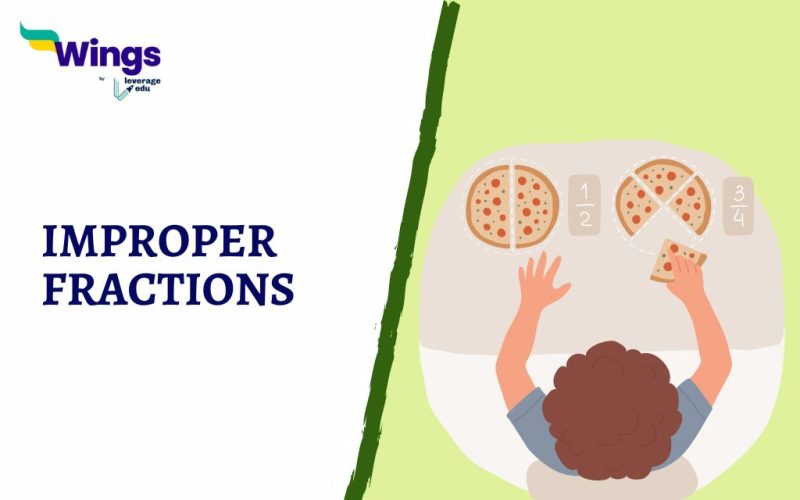In the world of Fractions, Improper Fractions are those fractions whose numerator (on the top) is greater than or equal to its denominator (on the bottom). This type of fraction does not fit the traditional idea of a fraction, where the numerator is typically smaller than the denominator. Read on to learn more in detail about Improper Fractions, How to solve them as well as 5 Examples of Improper Fractions.
How to Solve an Improper Fraction?
So here is how we need to solve Improper Fractions. It includes changing them into Mixed numbers or solving them in a simplified form. Here is how you need to Solve an Improper Fraction:
Step 1: First we need to Divide the numerator by the denominator. Moreover, this will give you a quotient and a remainder.
Step 2: Then you need to write the quotient as the whole number part of the mixed number and the remainder over the original denominator as the fractional part.
Since maths is a more visual language, here is an example to show you how to solve an Improper Fraction by taking 135.
Here the Numerator is 13 and the Denominator is 5.
So, 13 ÷ 5 = 2 with the remainder 3.
Thus, 135 as a Mixed Faction is 235.
Also Read: 7 Types of Fractions with Examples
5 Examples of Improper Fractions
Furthermore, here are 5 Examples of Improper Fractions to get you acquainted with them:
| 5 Examples of Improper Fractions | |
| 73 | This fraction is Improper because the Numerator 7is greater than the Denominator 3. |
| 102 | Another example is where 10 is greater than 2, hence making it Improper. |
| 164 | Similar to the previous example, 16 exceeds 4, resulting in an Improper Fraction. |
| 93 | Once again, 9 is greater than 3, so this is an Improper fraction. |
| 227 | Even though 227 is usually used as the formula of Pi 𝝅, it is still an Improper Fraction as 22 is greater than 7. |
Did you like learning about what are Improper Fractions? Keep reading our blogs to learn more about the basic concepts of Maths!
 One app for all your study abroad needs
One app for all your study abroad needs













